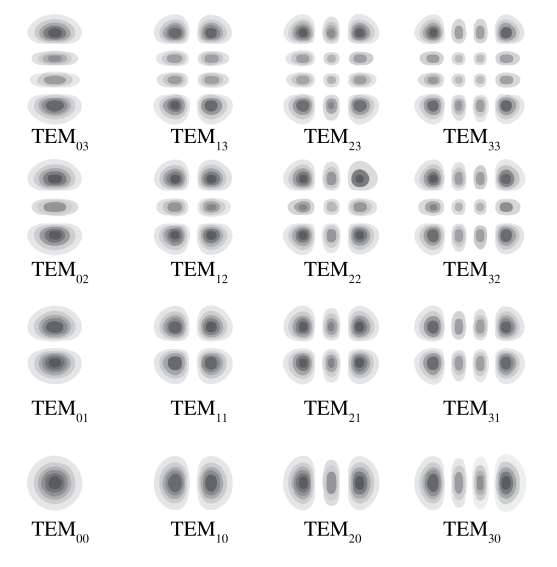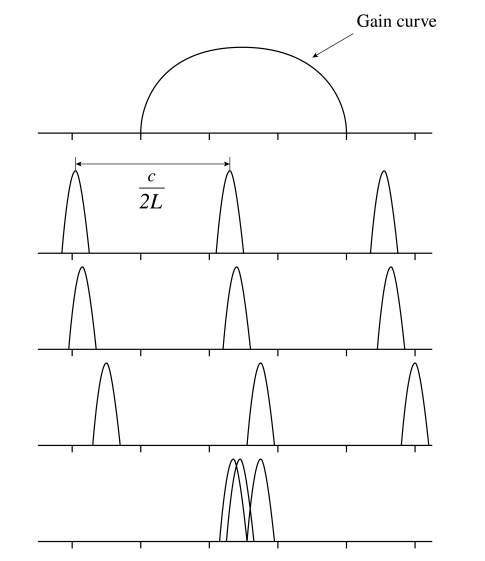7.5: Problems with Laser Operation
( \newcommand{\kernel}{\mathrm{null}\,}\)
In this section we consider some problems that occur with lasers and discuss what can be done to solve them.
1. Multiple Resonance Frequencies
In many applications such as laser communication and interferometry one needs a single wavelength. Consider a cavity of length L as shown in Figure 7.5.1 and suppose that the amplifier has a gain curve covering many resonances of the resonator. One way to achieve single-frequency output is by taking care that there is only one frequency for which the gain is larger than the losses. One then says that the laser is above threshold for only one frequency. This can be done by choosing the length L of the cavity to be so small that there is only one mode under the gain curve for which the gain is higher than the losses. However, a small length of the amplifier means less output power and a less collimated output beam. Another method would be to reduce the pumping so that for only one mode the gain compensates the losses. But this implies again that the laser output power is relatively small. A better solution is to add a Fabry-Perot cavity inside the laser cavity as shown in Figure 7.5.2. The cavity consists e.g. of a piece of glass of a certain thickness a.
By choosing a sufficiently small, the distance in frequency c/(2a) between the resonances of the Fabry-Perot cavity becomes so large that there is only one Fabry-Perot resonance under the gain curve of the amplifier. Furthermore, by choosing the proper angle for the Fabry-Perot cavity with respect to the axis of the laser cavity, the Fabry-Perot resonance can be coupled to the desired resonance frequency. This frequency is then the frequency of the laser output. All other resonance frequencies of the resonator under the gain curve are damped, because they are not a resonance of the Fabry-Perot cavity.
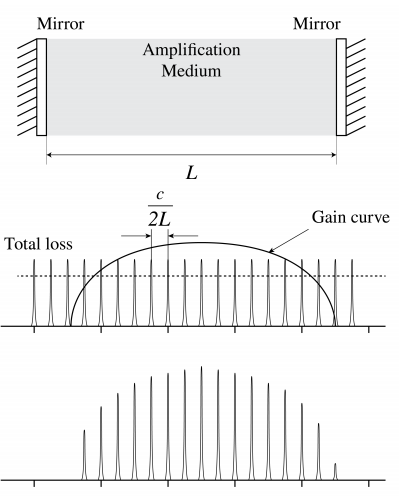
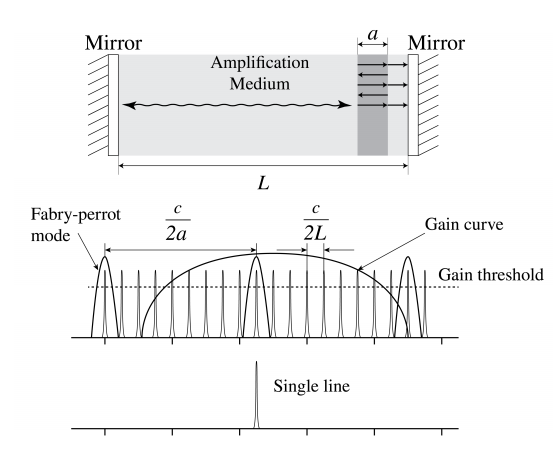
2. Multiple Transverse Modes
The best-known laser mode has transverse intensity distribution, which is a Gaussian function of transverse distance to the optical axis. We call a mode with Gaussian transverse shape a longitudinal mode and when its frequency satisfies ν=mc/(2L), it is called the m th longitudinal mode. However, inside the laser cavity other modes with different transverse patterns can also resonate. An example is shown in Figure 7.5.3 where mode (1,0) consists of two maxima. There exist many more transverse modes, as shown in Figure 7.5.4.
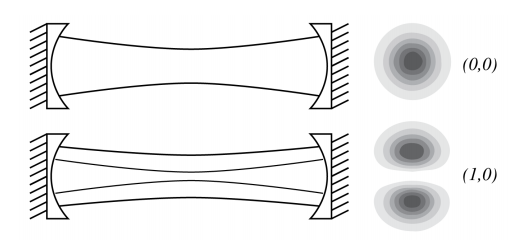
The transverse modes all have slightly different frequencies. So even when there is only one Gaussian mode above threshold (i.e. modes occur for only one value of m ), there can be many transverse modes with frequencies very close to the frequency of the Gaussian mode, which are also above threshold. This is illustrated in Figure 7.5.5 where the frequencies of modes (0,0),(1,0) and (1,1) all are above threshold. Usually one prefers the Gaussian mode and the transverse modes are undesired. How can one get rid of them? Because the Gaussian mode has smallest transverse width, the transverse modes can be eliminated by inserting an aperture in the laser cavity. This aperture is so small that the transverse modes suffer high-scattering losses, but is sufficiently large that the Gaussian mode is not affected.
